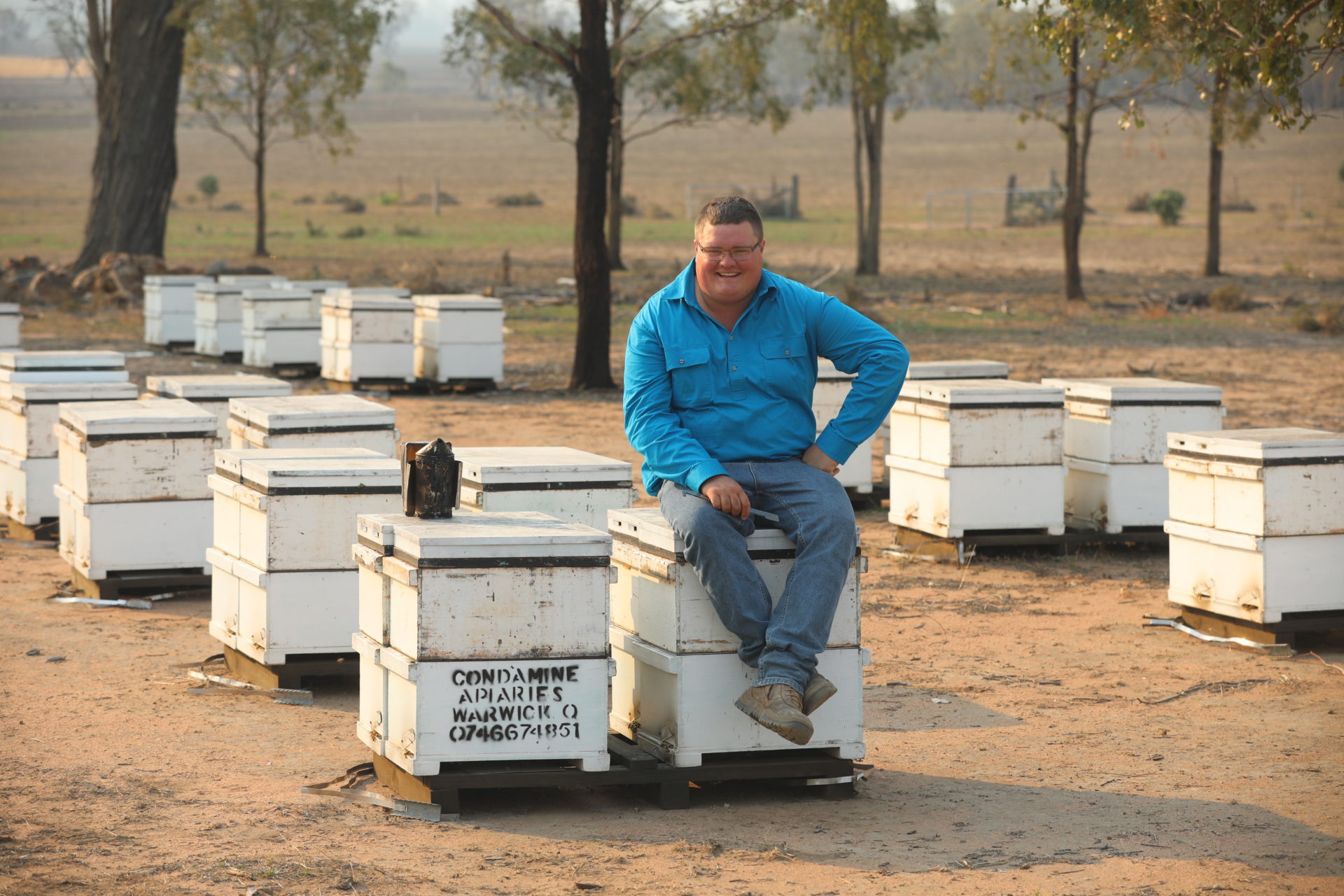A bicentennial of honey bees
9 March 2022TODAY marks two hundred years since seven honey bee hives arrived in Australia forging an industry that now supports human nutrition and contributes $14.2 billion to the national economy each year.

Australian Honey Bee Industry Council (AHBIC) Chair, Trevor Weatherhead, said since that day on 9 March 1822, honey bees had become critical to the health and nourishment of Australians and played an important role in enriching communities across the nation.
“Today more than 1,800 commercial beekeepers not only have a fascinating career, they also produce world-class honey that is highly sought after both locally and in export markets,” Mr Weatherhead said.
Credible historical data on the industry is available from 1962, when the establishment of a research, development and extension levy for honey producers to support industry development also created an important information collection tool.
Mr Weatherhead said that data now showed that since introduction of the levy 60 years ago, the number of hives being kept by commercial beekeepers had increased by more than 100 per cent, demonstrating a significant increase in productivity — primarily in pollination services.
“Along with producing the highest-quality of honey complemented by flavours unique to our flora, beekeepers and their honey bee colonies also provide essential pollination services to two-thirds of Australia’s food industries’ crops,” said Mr Weatherhead.
“Each year, thousands of beehives are transported across the country during the flowering season of horticultural and agricultural crops to deliver pollination services critical to the production of some of Australia’s favourite foods such as almonds, apples, avocadoes, pumpkins, blueberries and many others, which would be missing from our diets without honey bees.”
Fourth-generation Warwick-based beekeeper, Jacob Stevens, said his family had seen many changes and advancements in the industry since his great grandfather started the family legacy with a few beehives in the 1940s.
“In the early days, there was a lot of work done in the field with mobile extracting plants and tents and it was very labour intensive and often hot,” Mr Stevens said.
“We now have much better road infrastructure, mechanical aids to lift beehives, and modern trucks and equipment so we can bring honey home and process it in our sheds.”
Working alongside his father and brother, Mr Stevens said the family business had grown to managing more than 1,500 beehives and they remained optimistic about the industry’s future.
“We have been supplying honey to a commercial honey packer for around sixty years, and also travel approximately 1,000 kilometres from home for honey production and to provide pollination services,” he said.
“There’s a bright future for beekeepers in this country with the growing demand for pollination services, which has also been a very helpful source of income during dry times.
“We are also seeing a strong trend where people are more conscious of where their food comes from and buying locally to support Aussie farmers.”
Mr Weatherhead said all Australians could play a part in supporting honey bees for the next 200 years.
“Making informed choices when shopping and committing to buying 100 per cent Australian made honey will make a big difference to our beekeepers and the many agricultural industries that rely on honey bees for their survival,” he said.
